"Explore the grandeur and spirituality of Ratha Yatra, a vibrant Hindu festival symbolizing devotion and unity. Discover its rich traditions, cultural impact, and the profound significance it holds for millions worldwide."
Ratha Yatra, also known as the Festival of Chariots, is a vibrant and ancient Hindu festival celebrated with great fervor in various parts of India, particularly in the holy city of Puri, Odisha. This annual event commemorates the divine journey of Lord Jagannath, along with his siblings, Lord Balabhadra and Devi Subhadra, from the Jagannath Temple to the Gundicha Temple. The festival is a spectacle of grand processions, elaborate rituals, and fervent devotion, drawing millions of devotees and tourists from around the world.
Ratha Yatra festival traditions and significance
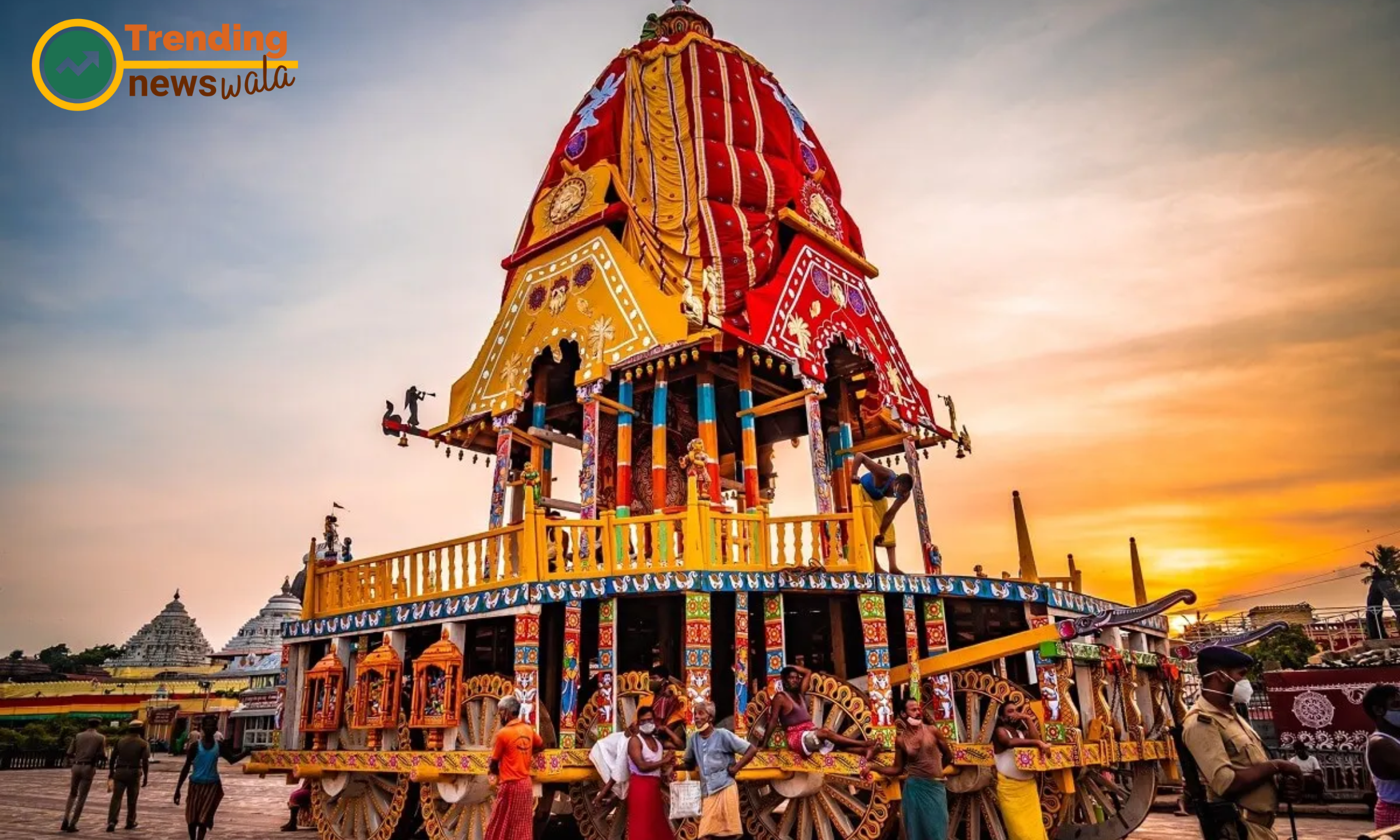
Ratha Yatra, also known as the Festival of Chariots, is a revered Hindu festival that holds deep cultural and spiritual significance. Rooted in ancient tradition and mythology, Ratha Yatra is celebrated with immense devotion and fervor in various parts of India, particularly in the sacred city of Puri, Odisha. This article delves into the rich traditions and profound significance of Ratha Yatra, shedding light on its timeless appeal and spiritual essence.
Historical Roots and Mythological Significance: The origins of Ratha Yatra can be traced back to Hindu scriptures and mythology, particularly the Skanda Purana and the Padma Purana. According to legend, Ratha Yatra commemorates the annual journey of Lord Jagannath, along with his siblings Lord Balabhadra and Devi Subhadra, from the Jagannath Temple to the Gundicha Temple. This divine journey symbolizes the bond between the deities and their devotees, as well as their benevolent presence in the world.
Chariot Construction and Rituals: Central to the Ratha Yatra celebrations are the elaborately crafted chariots, or "rathas," which serve as vehicles for the deities during the procession. These towering chariots are constructed months in advance by skilled artisans using traditional materials such as wood, rope, and cloth. Each chariot is adorned with vibrant colors, intricate carvings, and auspicious symbols, reflecting the grandeur and splendor of the divine beings they carry.
The main chariot, Nandighosa, is dedicated to Lord Jagannath and is the largest among the three. The other chariots, Taladhwaja for Lord Balabhadra and Darpadalana for Devi Subhadra, follow behind in the procession. The construction and decoration of the chariots are accompanied by elaborate rituals and ceremonies, invoking blessings for a successful and auspicious journey.
Procession and Devotee Participation: The highlight of Ratha Yatra is the grand procession of the chariots through the streets of Puri, drawing millions of devotees from far and wide. The journey covers a distance of approximately three kilometers, and devotees eagerly gather along the route to catch a glimpse of the divine deities. The pulling of the chariots by thousands of devotees is considered a sacred act, symbolizing the collective effort and devotion of the community in honoring the gods.
Rituals such as the "Chhera Pahanra," where the Gajapati King of Puri sweeps the chariot floors, and the "Hera Panchami," a symbolic tug-of-war between the servitors of Jagannath Temple and Devi Gundicha Temple, add to the sanctity and spectacle of the procession. Devotees chant prayers, sing bhajans, and offer flowers and fruits to the deities, seeking their blessings for prosperity, well-being, and spiritual upliftment.
Spiritual Significance and Universal Appeal: Ratha Yatra holds profound spiritual significance for Hindus, symbolizing the journey of the soul towards spiritual enlightenment. The festival transcends religious boundaries and attracts people of all faiths, who come together to witness the divine spectacle and partake in the collective devotion and celebration. Ratha Yatra serves as a reminder of the eternal presence of the divine in the world and the importance of humility, devotion, and unity in the pursuit of spiritual fulfillment.
Also Read :
- Ancient Festival of India Raksha Bandhan
- Ancient Festivals of India Dussehra
- Ancient Festivals of India Vasant Panchami
Detailed guide to Ratha Yatra procession
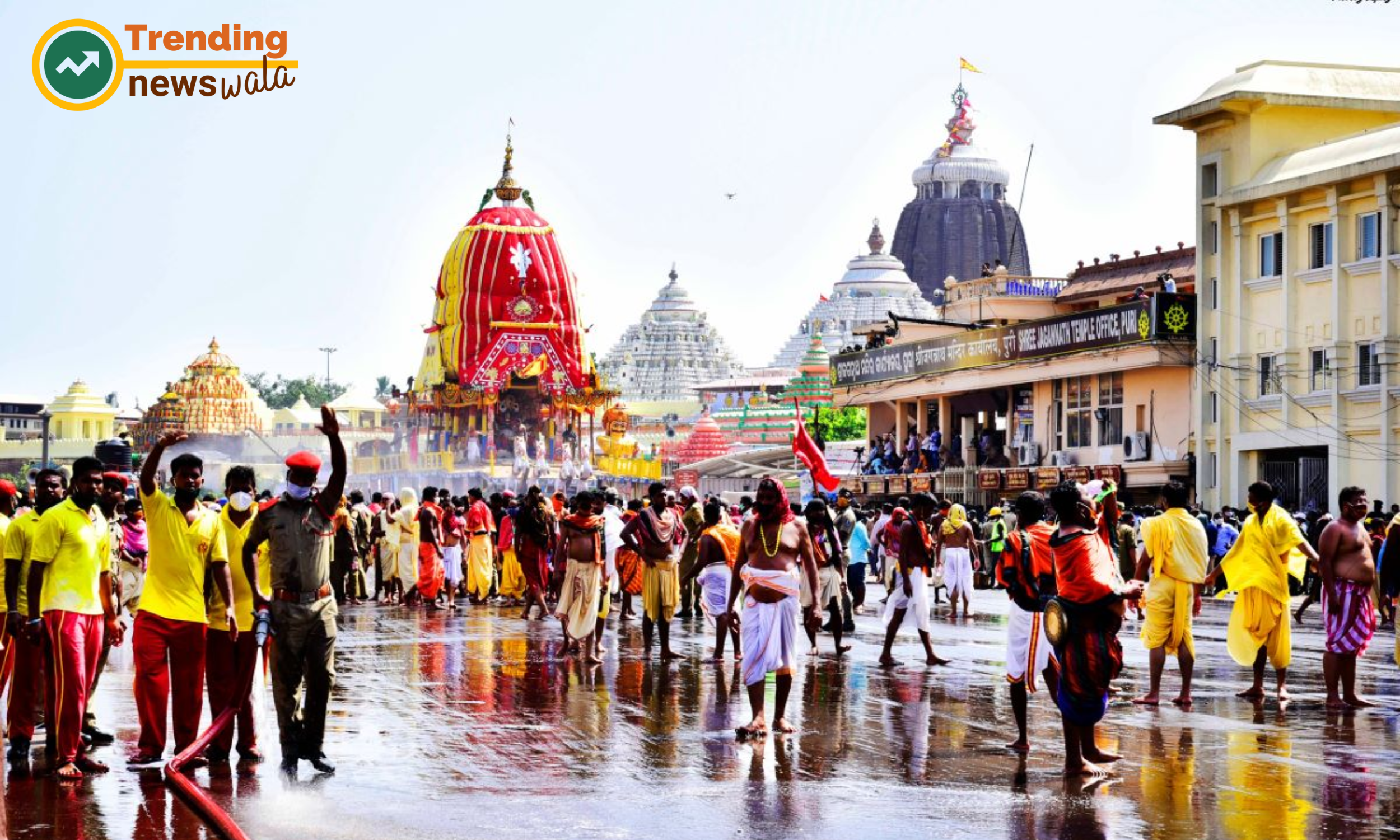
Preparations and Planning:
- The preparations for Ratha Yatra begin months in advance, with meticulous planning and coordination among temple authorities, artisans, volunteers, and local authorities.
- The construction of the chariots, or "rathas," starts several months prior to the festival. Skilled artisans use traditional techniques and materials to craft the towering chariots, each dedicated to a specific deity - Lord Jagannath, Lord Balabhadra, and Devi Subhadra.
- Detailed schedules, routes, and security arrangements are finalized well in advance to ensure the smooth conduct of the procession.
Chariot Construction and Decoration:
- The construction of the chariots is a labor-intensive process that involves skilled craftsmanship and traditional techniques passed down through generations.
- Each chariot is adorned with intricate carvings, colorful paintings, and auspicious symbols, reflecting the grandeur and magnificence of the deities they carry.
- The chariots are equipped with wheels and ropes for pulling, and special arrangements are made to ensure the safety of the devotees and participants.
Rituals and Ceremonies:
- The day of Ratha Yatra begins with elaborate rituals and ceremonies conducted at the Jagannath Temple in Puri. These rituals include bathing and adorning the deities, offering prayers and hymns, and seeking divine blessings for a successful procession.
- The "Chhera Pahanra" ceremony, where the Gajapati King of Puri sweeps the chariot floors as a gesture of humility and devotion, marks the official start of the procession.
- Other rituals, such as the "Hera Panchami" and "Pahandi Vijay," are performed with great reverence and devotion, adding to the sanctity and spiritual significance of the procession.
Procession Route and Timing:
- The Ratha Yatra procession follows a designated route that spans approximately three kilometers from the Jagannath Temple to the Gundicha Temple.
- The chariots are pulled by thousands of devotees using thick ropes, with each chariot moving at its own pace accompanied by chanting of hymns, singing of bhajans, and offerings of flowers and fruits.
- The procession typically lasts for several hours, with devotees lining the streets to catch a glimpse of the divine deities and seek their blessings.
Devotee Participation and Involvement:
- Devotees from all walks of life actively participate in the Ratha Yatra procession, pulling the chariots with unwavering devotion and enthusiasm.
- The participation of devotees is considered highly auspicious, as it is believed to cleanse sins and bestow divine blessings upon them.
- Many devotees travel from far and wide to take part in the procession, viewing it as a once-in-a-lifetime opportunity to connect with the divine and experience the spiritual energy of the festival.
Conclusion and Festive Celebrations:
- The conclusion of the Ratha Yatra procession marks the arrival of the deities at the Gundicha Temple, where they stay for a week before returning to the Jagannath Temple in the "Bahuda Yatra."
- The festival culminates in joyous celebrations, with cultural programs, devotional music, and feasting organized for devotees and participants.
- The Ratha Yatra procession is not only a grand spectacle but also a deeply spiritual and transformative experience for devotees, reaffirming their faith and devotion to the divine.
Ratha Yatra chariot construction and design
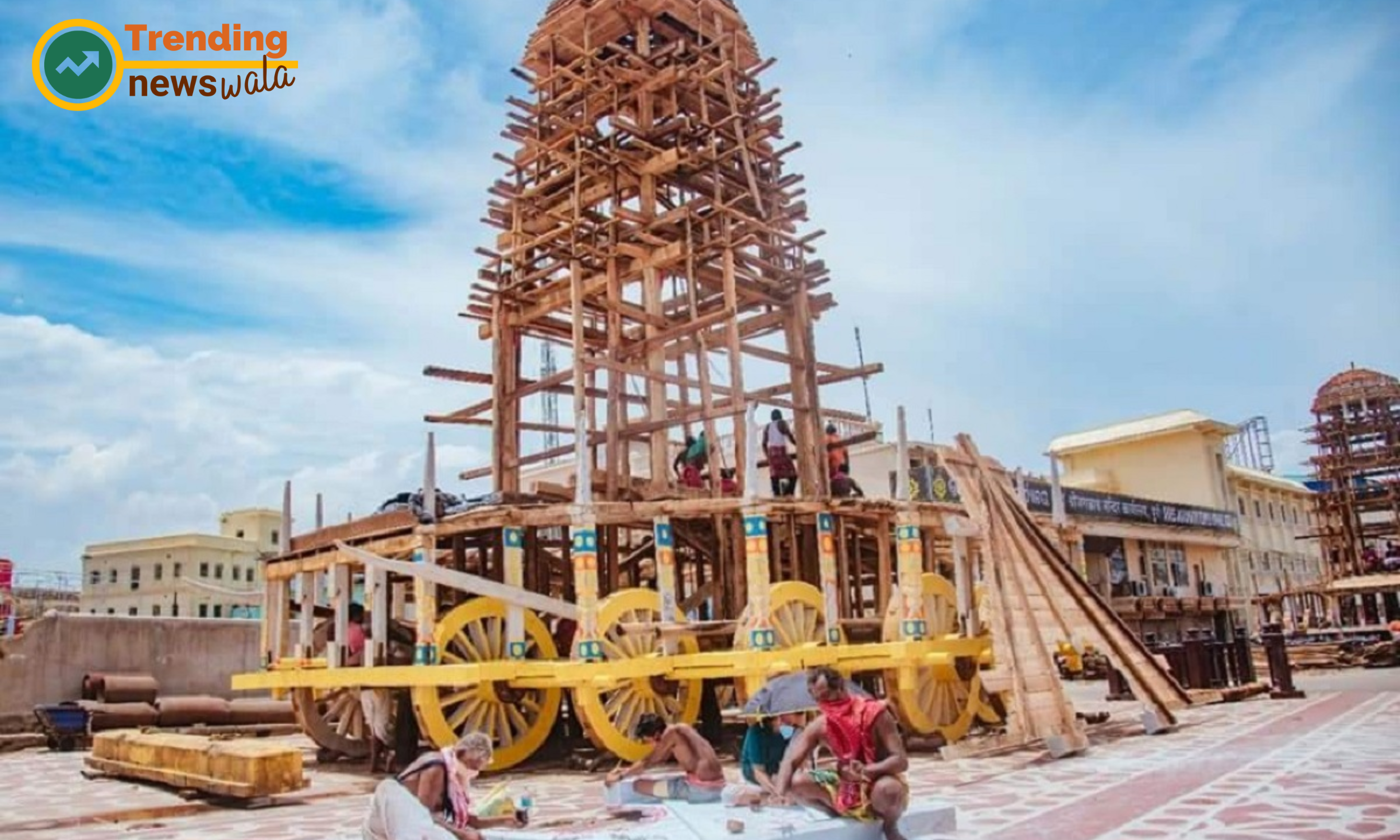
Materials Used:
- Traditional materials such as wood, ropes, cloth, and natural dyes are predominantly used in the construction of Ratha Yatra chariots.
- The main structural components of the chariots are made from sturdy wood, typically sourced from specific types of trees considered auspicious for the purpose.
- High-quality ropes, often made from natural fibers like jute, are used to bind the wooden components together securely.
- Vibrantly colored cloth, usually in auspicious shades of red, yellow, green, and blue, is used to adorn the chariots and create canopies.
Structural Design:
- The design of Ratha Yatra chariots is characterized by its towering and majestic appearance, reflecting the grandeur and splendor of the deities they carry.
- Each chariot consists of multiple tiers or levels, with the main deity placed on the topmost level to symbolize their elevated status.
- Intricate carvings, geometric patterns, and religious symbols adorn the exterior of the chariots, depicting scenes from Hindu mythology and scriptures.
- The chariots are designed to be sturdy and stable, capable of supporting the weight of the deity idols and withstanding the rigors of the procession.
Chariot Components:
- The main components of Ratha Yatra chariots include the base platform, the superstructure, the canopy, and the wheels.
- The base platform serves as the foundation of the chariot and provides stability during the procession. It is constructed using thick wooden planks arranged in a rectangular or square shape.
- The superstructure comprises multiple levels or tiers, with intricately carved wooden pillars supporting the upper levels. Each tier is adorned with decorative motifs and symbols, adding to the aesthetic appeal of the chariot.
- The canopy, made from colorful cloth and supported by wooden beams, provides shade and protection for the deity idols during the procession.
- The wheels of the chariot are massive and sturdy, constructed from solid wooden spokes and rims. They are reinforced with metal bands to withstand the weight and movement of the chariot.
Artistic Embellishments:
- Ratha Yatra chariots are adorned with elaborate artistic embellishments, including intricate carvings, paintings, and decorative elements.
- Skilled artisans meticulously carve religious motifs, floral patterns, and mythological scenes onto the wooden surfaces of the chariots, infusing them with beauty and symbolism.
- Brightly colored paints and natural dyes are used to enhance the decorative elements and create a visually stunning effect that captivates the onlookers.
Symbolism and Significance:
- The design of Ratha Yatra chariots is laden with symbolism and significance, reflecting the divine nature of the deities they carry and the spiritual essence of the festival.
- The towering height of the chariots symbolizes the lofty status of the deities and their transcendence over worldly concerns.
- The intricate carvings and decorative motifs depict stories from Hindu mythology and scriptures, conveying spiritual teachings and philosophical insights.
- The vibrant colors and ornate designs evoke a sense of joy, celebration, and reverence among devotees, inspiring them to participate wholeheartedly in the festival.
Spiritual significance of Ratha Yatra in Hinduism
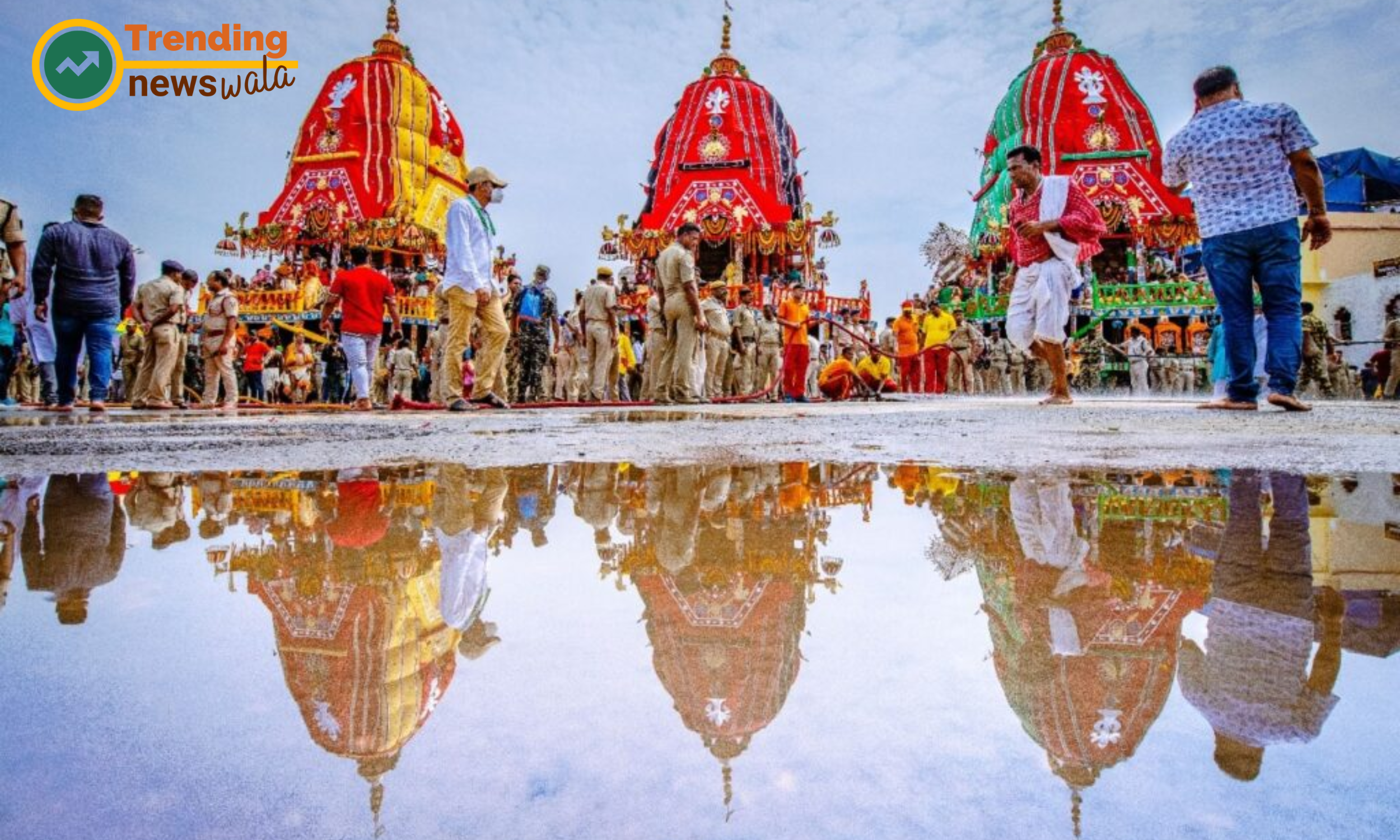
Unity of All Beings:
- Ratha Yatra is symbolic of the universal principle of unity and oneness in Hindu philosophy. The procession brings together people from all walks of life, irrespective of caste, creed, or social status, to participate in the divine journey of Lord Jagannath.
- This unity reflects the underlying truth in Hinduism that all beings are interconnected and part of the same divine consciousness. The act of pulling the chariot together signifies the collective effort needed to overcome obstacles and reach spiritual goals.
Journey of the Soul:
- Ratha Yatra symbolizes the journey of the soul towards spiritual liberation or moksha. The chariot represents the physical body, which carries the divine essence or soul (atman).
- The journey of the chariot from the Jagannath Temple to the Gundicha Temple signifies the soul's journey from the material world (represented by the Jagannath Temple) to the spiritual realm (represented by the Gundicha Temple).
- The devotees' participation in the procession represents their commitment to advancing spiritually and aligning themselves with the divine will.
Devotion and Surrender:
- Ratha Yatra is an expression of deep devotion and surrender to the divine will. Devotees willingly pull the chariot, surrendering their ego and desires in service to the divine.
- This act of selfless service, known as seva or bhakti, is considered highly auspicious in Hinduism and is believed to purify the heart and mind, leading to spiritual growth and transformation.
- By participating in Ratha Yatra with devotion and surrender, devotees seek to deepen their connection with the divine and attain inner peace and fulfillment.
Removal of Impurities:
- Ratha Yatra is believed to have the power to cleanse impurities and negative karma accumulated by devotees. The act of pulling the chariot is considered purifying, as it symbolically removes sins and obstacles on the spiritual path.
- Devotees view Ratha Yatra as an opportunity to seek forgiveness, make spiritual progress, and overcome challenges in their lives. The divine presence of Lord Jagannath during the procession is believed to bestow blessings and grace upon devotees, helping them overcome adversity and attain spiritual liberation.
Celebration of Divine Love:
- Ratha Yatra is ultimately a celebration of divine love and grace. The chariot procession represents the journey of love between the devotee and the divine, symbolized by the divine presence of Lord Jagannath.
- The joyous atmosphere, devotional singing, and communal participation in Ratha Yatra reflect the deep-seated love and devotion that devotees feel towards the divine. It is a time of celebration, gratitude, and reverence for the divine blessings bestowed upon devotees.
Also Read :
- Ancient Festivals of India Guru Purnima
- Ancient Festivals of India Mahalakshmi Vrata
- Ancient Festivals of India Krishna Janmashtami
Ratha Yatra rituals and customs explained
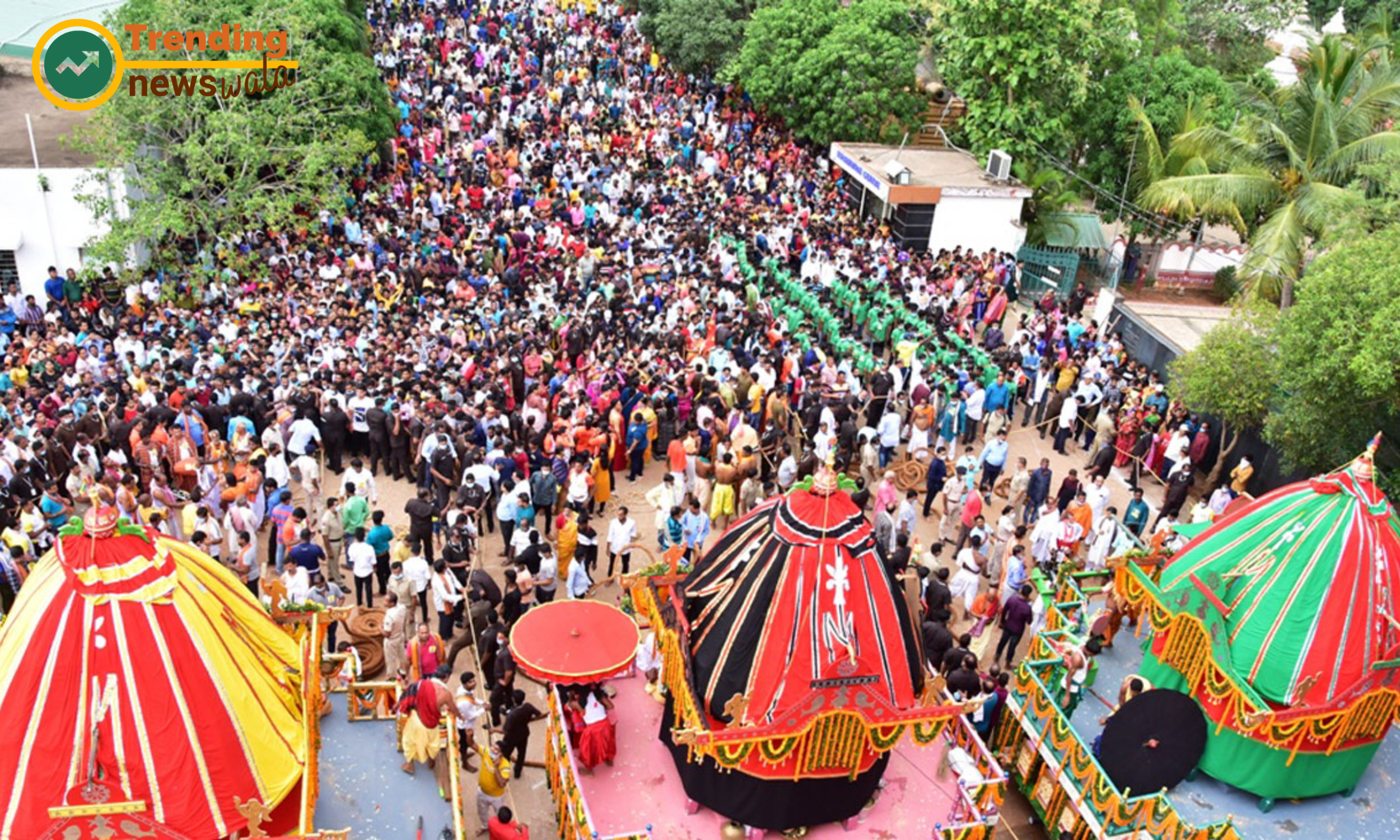
Snana Yatra (Bathing Ceremony):
- Snana Yatra marks the commencement of Ratha Yatra festivities and is held on the full moon day (Purnima) of the Hindu lunar month of Jyeshtha.
- During this ritual, the deities - Lord Jagannath, Lord Balabhadra, and Devi Subhadra - are ceremonially bathed with 108 pitchers of water drawn from a sacred well within the Jagannath Temple complex.
- The deities are then placed in a special bathing pavilion known as the Snana Bedi, where they are bathed with aromatic water, milk, honey, sandalwood paste, and other auspicious substances.
Anasara (Ritual Rest):
- Following Snana Yatra, the deities undergo a period of ritual rest known as Anasara. During this time, they are considered to be unwell and are not publicly worshipped or displayed.
- Anasara lasts for approximately 15 days, during which devotees offer prayers and perform rituals for the well-being of the deities.
Nava Jaubana Darshana (New Youthful Appearance):
- After the conclusion of Anasara, the deities emerge with a new youthful appearance, signifying their rejuvenation and renewal.
- Devotees eagerly await the opportunity to catch a glimpse of the deities in their refreshed form, and special darshan ceremonies are held at the Jagannath Temple to mark the occasion.
Chhera Pahanra (Sweeping of the Chariots):
- Chhera Pahanra is a symbolic ritual where the Gajapati King of Puri sweeps the floors of the chariots with a golden broom as a gesture of humility and devotion.
- This ritual signifies the egalitarian nature of devotion and underscores the principle that all are equal in the eyes of the divine.
Ratha Pratistha (Chariot Installation):
- Ratha Pratistha is the ceremony where the deities are installed in their respective chariots in preparation for the procession.
- Priests perform elaborate rituals to invoke divine blessings and consecrate the chariots, ensuring their sanctity and readiness for the journey.
Hera Panchami (Charmed Ritual Tussle):
- Hera Panchami is a unique ritual that takes place on the fifth day of the Ratha Yatra festival.
- In this ritual, the servitors of the Jagannath Temple, led by the Raja Dibyasingha Deb, engage in a playful tug-of-war with the servitors of the Gundicha Temple, symbolizing a mythical conflict between Lord Jagannath and Goddess Lakshmi.
Ratha Yatra Procession:
- The highlight of Ratha Yatra is the grand procession of the chariots through the streets of Puri, from the Jagannath Temple to the Gundicha Temple.
- Devotees enthusiastically pull the chariots with thick ropes, chanting hymns and singing bhajans as they accompany the divine deities on their journey.
- The procession is a vibrant spectacle of devotion and festivity, attracting millions of devotees and tourists from around the world.
Bahuda Yatra (Return Journey):
- Bahuda Yatra, or the Return Journey, marks the conclusion of Ratha Yatra. It is the procession where the deities return to the Jagannath Temple from the Gundicha Temple.
- The Bahuda Yatra procession follows the same route as the Ratha Yatra but in reverse, and it is conducted with the same fervor and devotion as the outward journey.
Sunabesa (Golden Attire):
- Sunabesa is a ritual where the deities are adorned with golden attire upon their return to the Jagannath Temple.
- The golden attire symbolizes the divine splendor and majesty of the deities and is considered highly auspicious for devotees.
Niladri Bije (Entry into the Temple):
- Niladri Bije is the final ritual where the deities re-enter the Jagannath Temple and are welcomed with great reverence.
- The ritual signifies the completion of the Ratha Yatra festival and the return of the deities to their abode within the temple premises.
Historical background of Ratha Yatra festival
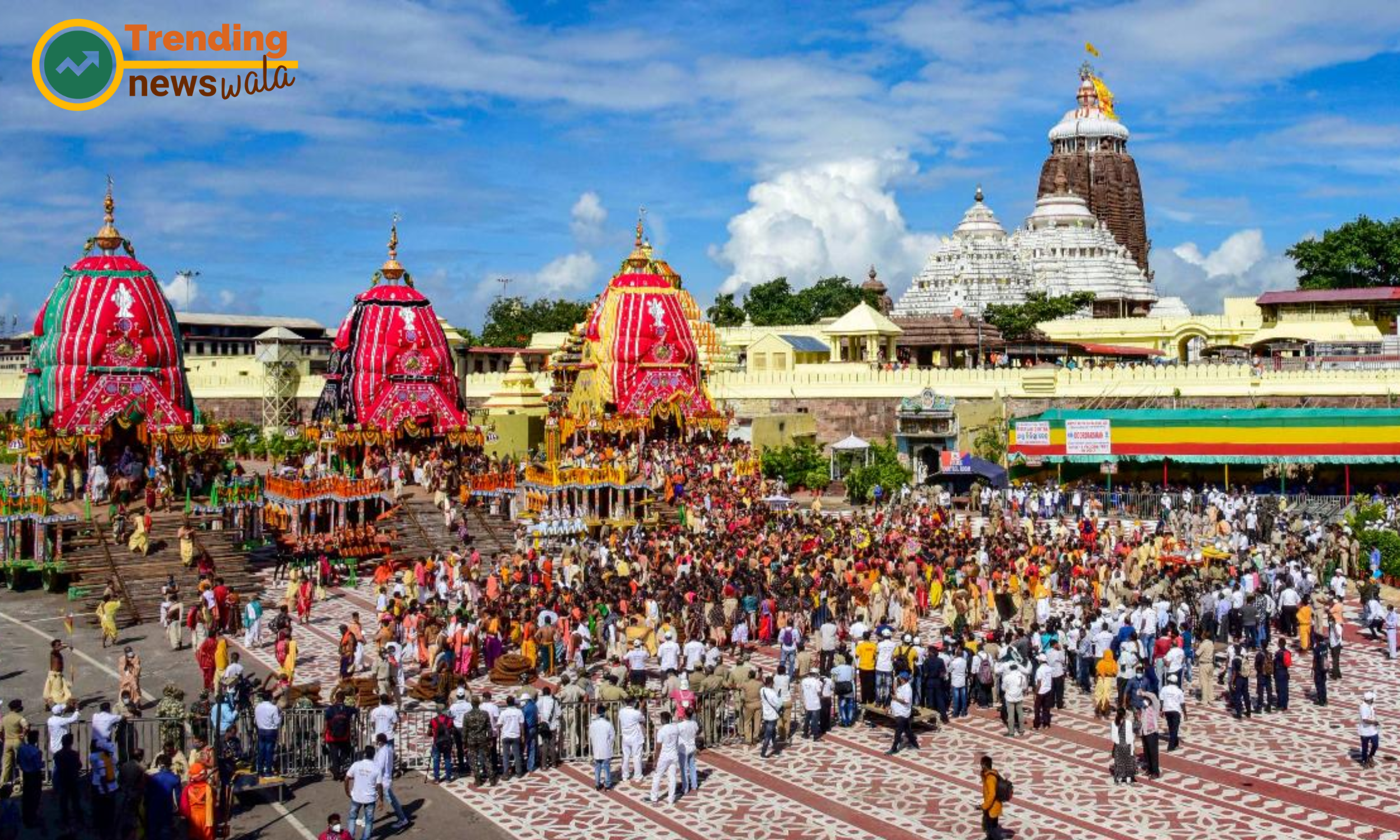
Ancient Origins:
- The roots of Ratha Yatra can be traced back to ancient Hindu scriptures, particularly the Skanda Purana and the Padma Purana, which mention the grand festival and its significance.
- While the exact historical origins of Ratha Yatra are not well-documented, it is believed to have originated in the Jagannath Temple of Puri, Odisha, which has been a revered pilgrimage site for centuries.
Legend of King Indradyumna:
- According to Hindu mythology, the Ratha Yatra festival is associated with the legendary King Indradyumna, who is credited with the construction of the Jagannath Temple in Puri.
- Legend has it that King Indradyumna received divine instructions from Lord Vishnu in a dream, directing him to construct a temple in Puri and install the wooden idols of Lord Jagannath, Lord Balabhadra, and Devi Subhadra within it.
Influence of Vaishnavism:
- Ratha Yatra is deeply rooted in Vaishnavism, one of the major sects of Hinduism that worships Lord Vishnu and his incarnations.
- The concept of the chariot procession is symbolic of the journey of Lord Jagannath, who is considered an incarnation of Lord Vishnu, from his abode in the Jagannath Temple to the Gundicha Temple to visit his aunt, Devi Gundicha.
Historical Records:
- Historical records and inscriptions provide evidence of Ratha Yatra being celebrated in Puri since ancient times. The festival was patronized by various dynasties that ruled over the region, including the Ganga dynasty, the Gajapati dynasty, and the Maratha rulers.
- The earliest written accounts of Ratha Yatra date back to the 12th century, during the reign of King Anantavarman Chodaganga Deva of the Eastern Ganga dynasty.
Influence of Chaitanya Mahaprabhu:
- The 16th-century saint and Vaishnava preacher, Chaitanya Mahaprabhu, played a significant role in popularizing the Ratha Yatra festival outside of Odisha.
- Chaitanya Mahaprabhu was a fervent devotee of Lord Jagannath and actively participated in the Ratha Yatra festival in Puri. He also introduced the festival in Bengal, where it became known as the "Ratha Yatra of Mahaprabhu."
Spread of the Festival:
- Over time, Ratha Yatra gained widespread popularity and became one of the most important festivals in the Hindu calendar. It spread to various parts of India, including West Bengal, Gujarat, Maharashtra, and other regions with significant Vaishnava communities.
- Today, Ratha Yatra is celebrated not only in India but also in many countries around the world where there are Hindu communities and temples dedicated to Lord Jagannath.
Cultural Significance:
- Ratha Yatra holds immense cultural significance as it brings together people from diverse backgrounds to participate in a collective expression of devotion and spirituality.
- The festival serves as a platform for cultural exchange, artistic expression, and community engagement, fostering a sense of unity and harmony among people of different faiths and traditions.
Significance of Lord Jagannath in Ratha Yatra
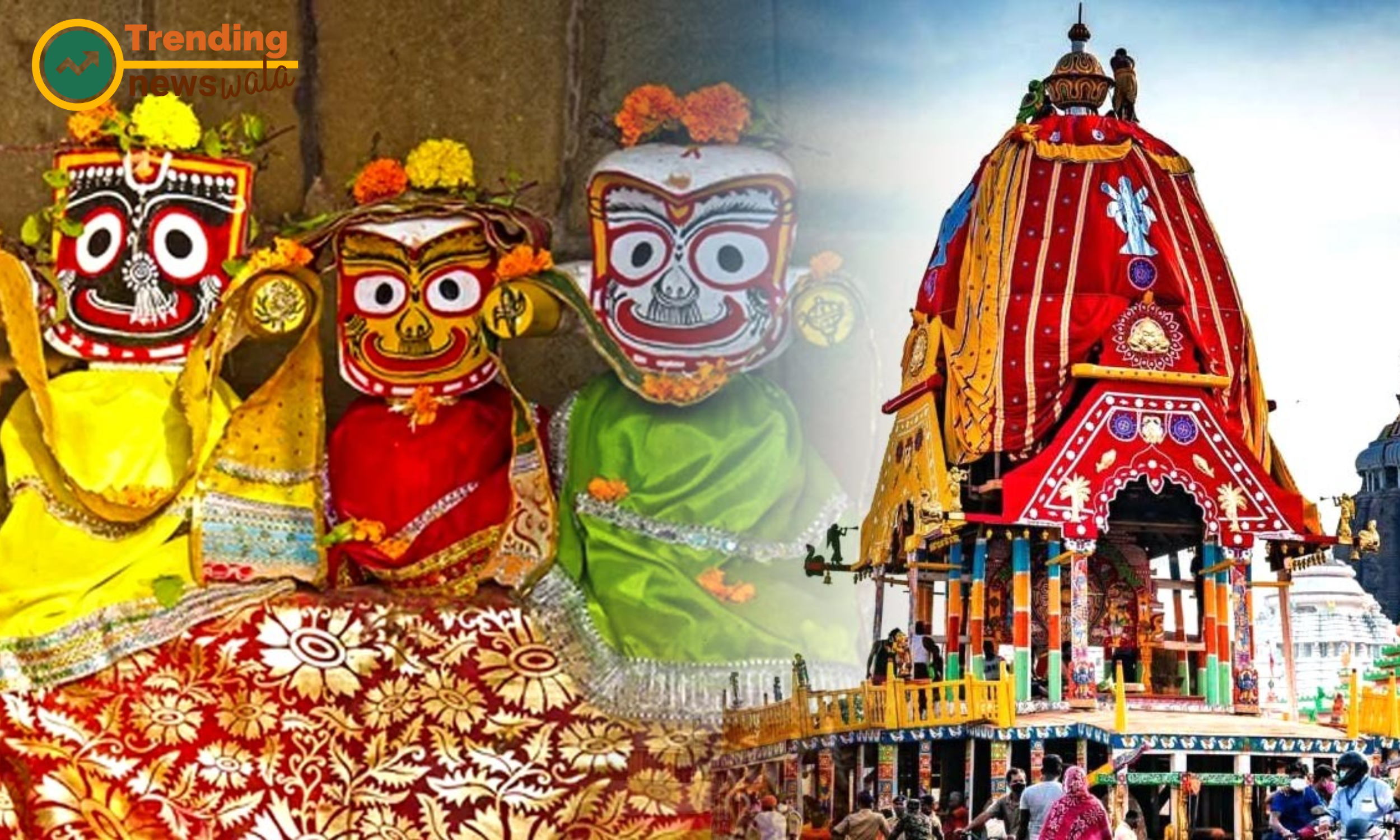
Incarnation of Lord Vishnu:
- Lord Jagannath is revered as an incarnation of Lord Vishnu, one of the principal deities in Hinduism. According to Hindu mythology, Lord Vishnu descends to Earth in various forms (avatars) to uphold righteousness and restore cosmic order.
- In the Jagannath tradition, Lord Jagannath is worshipped as the presiding deity of the universe (Jagannatha), symbolizing the cosmic form of Lord Vishnu.
Universal Brotherhood:
- Lord Jagannath is known as the "Lord of the Universe" and is worshipped by people of all castes, creeds, and backgrounds. His divine presence embodies the principle of universal brotherhood and inclusivity, transcending social distinctions and fostering unity among devotees.
- The Ratha Yatra festival, with its open participation and communal celebration, reflects the universal appeal of Lord Jagannath as a unifying force that brings people together in devotion and reverence.
Symbol of Renunciation:
- Lord Jagannath's form is unique and distinct from conventional Hindu deities. He is depicted with large, round eyes and a simplified form, devoid of hands or legs.
- This unconventional representation is believed to symbolize the concept of renunciation (tyaga) and detachment from worldly attachments. Lord Jagannath is seen as renouncing his royal regalia and divine attributes to embrace a form of simplicity and humility.
Spiritual Liberation:
- Worshipping Lord Jagannath and participating in the Ratha Yatra procession are considered highly auspicious acts that bestow spiritual merit and blessings upon devotees.
- It is believed that by witnessing the divine journey of Lord Jagannath during Ratha Yatra, devotees can attain spiritual liberation (moksha) and be liberated from the cycle of birth and death (samsara).
Unity of Trinity:
- Lord Jagannath is worshipped along with his siblings, Lord Balabhadra (Balarama) and Devi Subhadra, during the Ratha Yatra festival.
- The divine trinity of Jagannath, Balabhadra, and Subhadra symbolizes the cosmic principles of creation (Brahma), preservation (Vishnu), and destruction (Shiva), respectively. Together, they represent the cycle of life, death, and rebirth in Hindu cosmology.
Divine Leela (Play):
- The Ratha Yatra festival is considered a divine leela (play) enacted by Lord Jagannath and his divine siblings. It is believed that the deities voluntarily come out of the temple to interact with devotees and bless them with their divine presence.
- The chariot procession is viewed as a sacred journey where devotees can witness and participate in the divine play of Lord Jagannath, experiencing spiritual ecstasy and divine grace.
Also Read :
- Ancient Festivals of India Valmiki Jayanti
- Ancient Festivals of India Karva Chauth
- Ancient Festivals of India Radhastami
Ratha Yatra festival attire and dress code
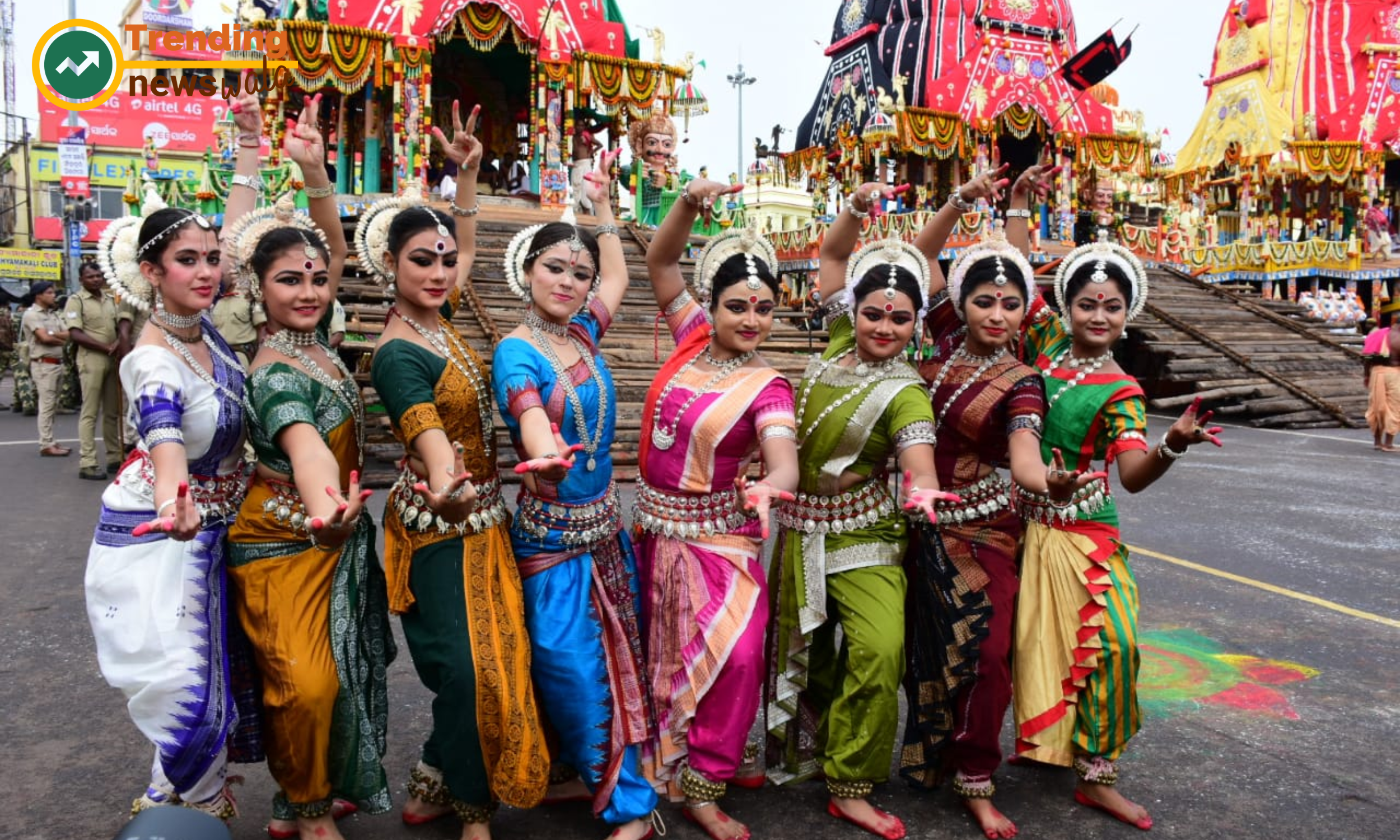
Devotees and Participants:
- Devotees and participants attending the Ratha Yatra procession typically wear traditional Indian attire such as sarees for women and dhotis or kurta-pajamas for men.
- Bright and colorful clothing is favored, reflecting the festive spirit of the occasion. Many people choose to wear traditional Odia attire, especially if they are locals from the region.
- Some devotees also opt to wear special attire associated with Vaishnavism, such as Tulasi necklaces or Vaishnava tilak (religious markings) on the forehead.
Priests and Temple Personnel:
- Priests and temple personnel involved in conducting rituals and ceremonies during Ratha Yatra often wear traditional attire befitting their roles.
- Priests may wear traditional dhotis or kurta-pajamas, along with sacred thread (janeu) and other religious adornments.
- Temple personnel, including sevaks (servitors) and volunteers, may wear designated uniforms or attire specified by the temple authorities.
Rath Sevaks (Chariot Pullers):
- Rath sevaks, or chariot pullers, play a crucial role in the Ratha Yatra procession. They are typically dressed in simple attire suitable for physical exertion.
- Rath sevaks often wear dhotis or shorts, along with coffee table . They may also wear headscarves or turbans to protect themselves from the sun.
- Some Rath sevaks choose to adorn themselves with garlands of flowers or other auspicious ornaments as a mark of devotion and reverence.
Special Attire for Deities:
- The deities, Lord Jagannath, Lord Balabhadra, and Devi Subhadra, are adorned in elaborate attire and jewelry during the Ratha Yatra procession.
- The attire of the deities may vary depending on the specific rituals and ceremonies being performed. They are often dressed in richly embroidered silk garments, adorned with precious jewels, and decorated with fragrant flowers.
- Special care is taken to ensure that the attire of the deities reflects their divine status and adds to the grandeur of the procession.
General Guidelines:
- While there may not be strict dress codes enforced for attendees of the Ratha Yatra festival, it is customary to dress modestly and respectfully.
- Visitors are encouraged to dress comfortably and appropriately for the weather conditions, as the Ratha Yatra procession often takes place outdoors under the sun.
- It is advisable to avoid wearing revealing or provocative clothing out of respect for the religious and cultural significance of the festival.
Participation guidelines for Ratha Yatra devotees
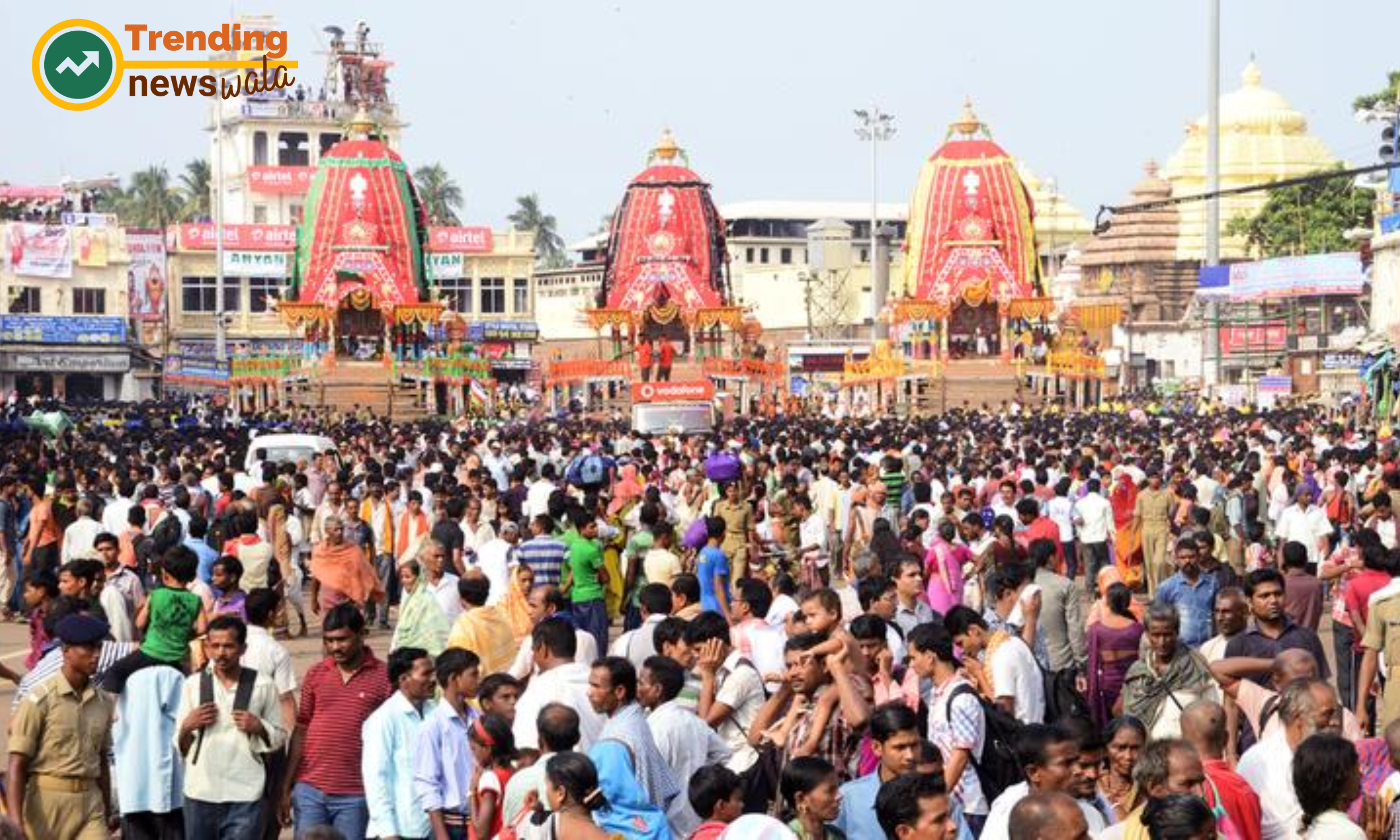
Respect for Sacred Space:
- Devotees participating in Ratha Yatra are expected to maintain a respectful attitude towards the sacred space of the temple and the deities.
- They should refrain from inappropriate behavior, loud noises, or disruptive activities that may disturb the sanctity of the temple premises or the procession route.
Observance of Religious Customs:
- Devotees are encouraged to observe religious customs and traditions associated with Ratha Yatra, including offering prayers, making offerings, and participating in rituals and ceremonies.
- They should familiarize themselves with the specific customs and practices followed at the temple where Ratha Yatra is being celebrated and adhere to them respectfully.
Dress Code and Attire:
- Devotees are advised to dress modestly and appropriately for the occasion, wearing traditional attire if possible.
- Revealing or provocative clothing should be avoided out of respect for the religious and cultural significance of the festival.
Follow Instructions from Authorities:
- Devotees should follow instructions from temple authorities, event organizers, and security personnel to ensure their safety and the smooth conduct of the procession.
- They should cooperate with crowd control measures, follow designated routes, and adhere to any restrictions or guidelines issued by the authorities.
Hygiene and Cleanliness:
- Devotees should maintain personal hygiene and cleanliness during the festival, especially if participating in the chariot procession.
- They should dispose of waste responsibly and avoid littering the temple premises or the procession route.
Respect for Others:
- Devotees should show respect and consideration towards fellow participants, volunteers, and temple staff.
- They should refrain from engaging in behavior that may cause inconvenience or discomfort to others, such as pushing, shoving, or overcrowding.
Spirit of Devotion and Reverence:
- Above all, devotees are encouraged to approach Ratha Yatra with a spirit of devotion, reverence, and humility.
- They should focus on connecting with the divine presence of Lord Jagannath and experiencing the spiritual essence of the festival, rather than solely seeking personal gratification or entertainment.
Health and Safety Precautions:
- Devotees should prioritize their health and safety during Ratha Yatra, especially considering the large crowds and outdoor setting of the procession.
- They should stay hydrated, protect themselves from sun exposure, and follow any COVID-19 safety protocols or guidelines issued by health authorities.
Also Read :
- Ancient Festivals of India Ganesh Chaturthi
- Ancient Festivals of India Kartik Poornima
- Ancient Festivals of India Bhai Dooj
Impact of Ratha Yatra on local communities
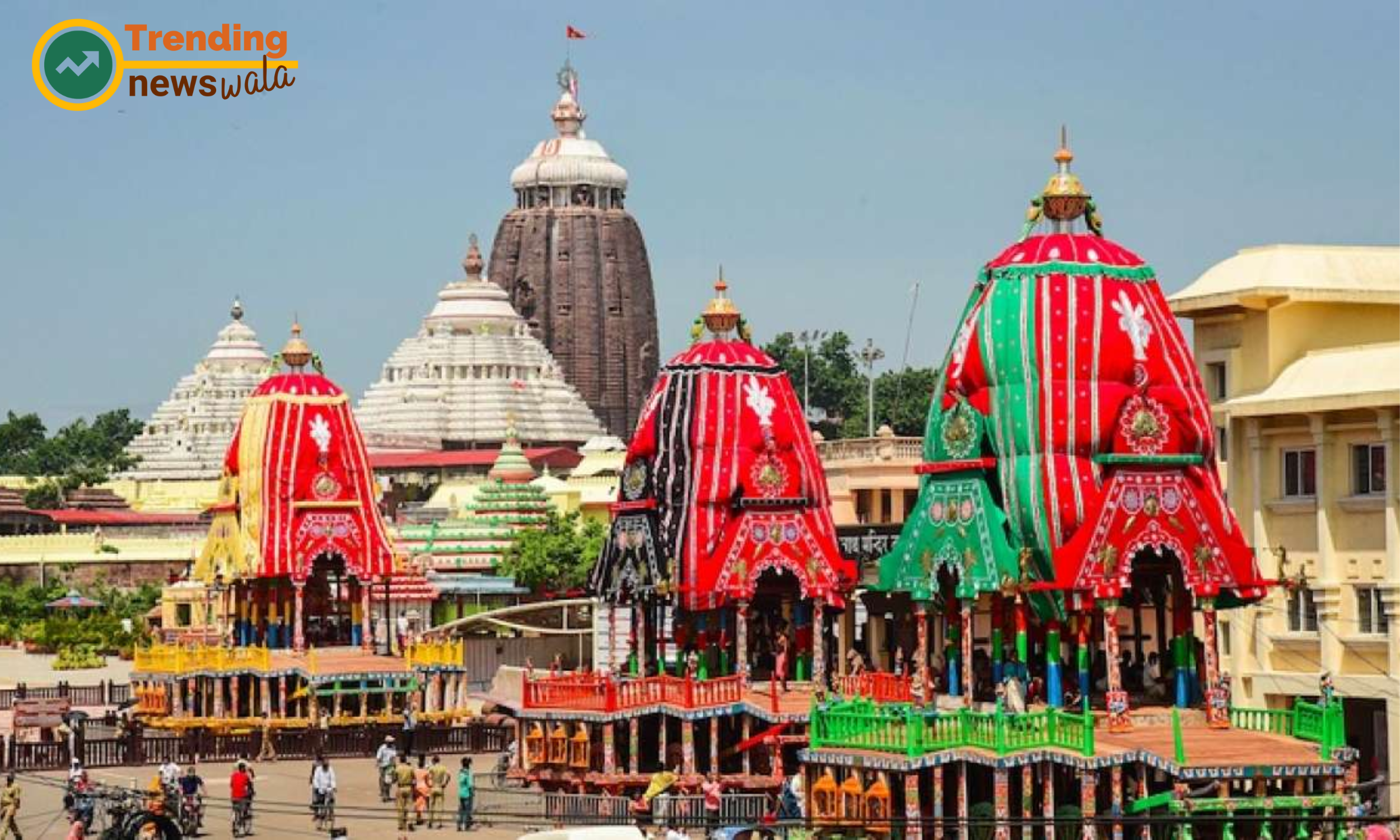
Cultural Significance:
- Ratha Yatra is deeply ingrained in the cultural fabric of communities where it is celebrated, serving as a symbol of shared heritage, traditions, and values.
- The festival provides an opportunity for communities to come together and celebrate their religious and cultural identity, fostering a sense of unity and belonging among participants.
Tourism and Hospitality:
- Ratha Yatra attracts a large number of pilgrims, tourists, and visitors from across India and around the world, leading to a boost in tourism and hospitality industries in the host cities.
- Local businesses, including hotels, restaurants, souvenir shops, and transportation services, benefit from increased patronage during the festival period, contributing to economic growth and development.
Job Creation:
- The influx of tourists and visitors during Ratha Yatra creates employment opportunities for local residents, particularly in sectors such as tourism, hospitality, transportation, and retail.
- Temporary employment opportunities may also arise for vendors, artisans, craftsmen, and performers who cater to the needs and preferences of festival attendees.
Civic Engagement and Volunteerism:
- Ratha Yatra encourages civic engagement and volunteerism within local communities, as residents actively participate in organizing and managing various aspects of the festival.
- Volunteers play a crucial role in assisting with crowd control, logistics, security, sanitation, and other operational tasks, contributing to the smooth conduct of the festival and ensuring the safety and comfort of attendees.
Promotion of Traditional Arts and Crafts:
- Ratha Yatra provides a platform for the promotion and preservation of traditional arts and crafts, as artisans and craftsmen showcase their skills and craftsmanship through the creation of decorative items, religious artifacts, and festival paraphernalia.
- Local artisans may benefit from increased demand for their products during the festival, leading to greater recognition and appreciation of indigenous art forms and cultural heritage.
Interfaith Harmony and Social Cohesion:
- Ratha Yatra promotes interfaith harmony and social cohesion by bringing together people from diverse religious backgrounds and communities to participate in a shared celebration of devotion and spirituality.
- The festival serves as a catalyst for dialogue, exchange, and understanding among people of different faiths, fostering mutual respect, tolerance, and cooperation within society.
Environmental Impact:
- Ratha Yatra may have environmental implications, particularly in terms of waste generation, traffic congestion, and air pollution associated with increased vehicular movement and crowds.
- Efforts to minimize the environmental footprint of the festival, such as waste management initiatives, traffic management strategies, and awareness campaigns on eco-friendly practices, can help mitigate adverse impacts and promote sustainable development.
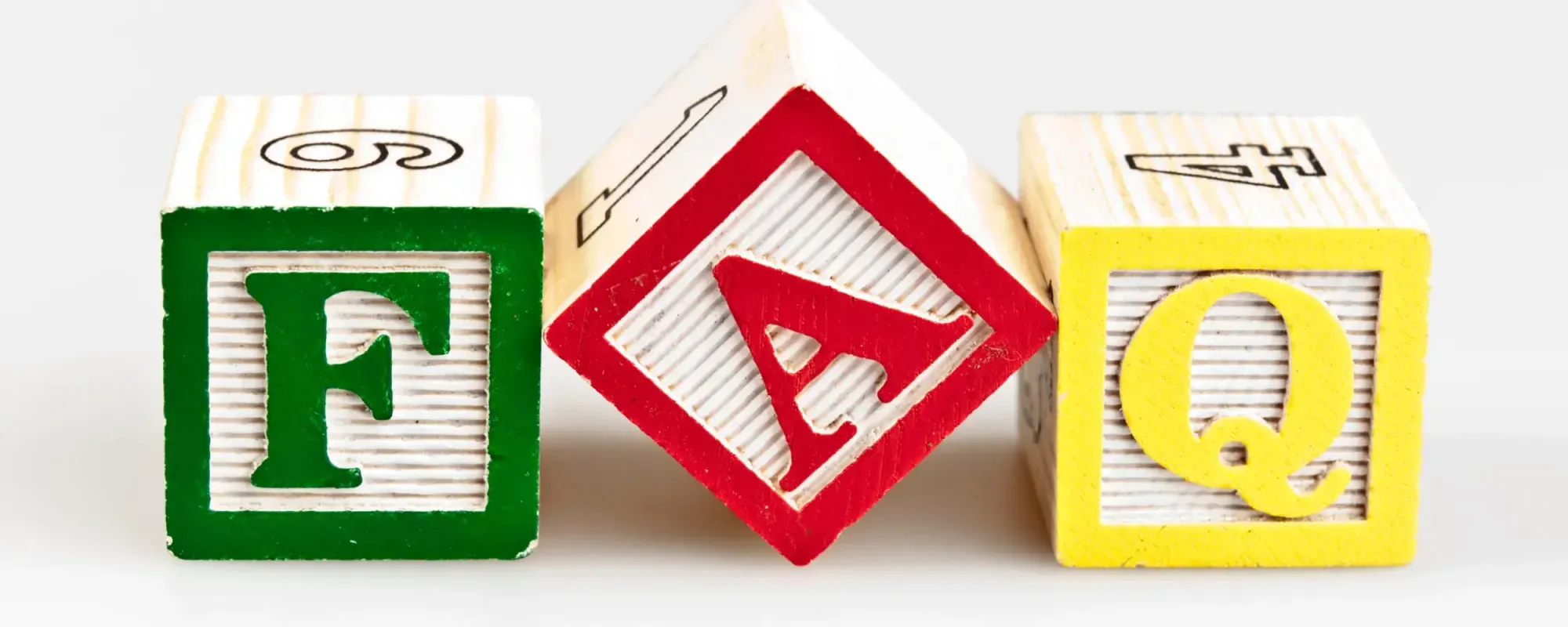
What is Ratha Yatra?
Ratha Yatra, also known as the Festival of Chariots, is a Hindu festival celebrated to honor Lord Jagannath, Lord Balabhadra, and Devi Subhadra. It involves the procession of elaborately decorated chariots carrying the deities through the streets.
Where is Ratha Yatra celebrated?
Ratha Yatra is primarily celebrated in Puri, Odisha, India, where it originated. However, variations of the festival are also observed in other parts of India and around the world, wherever there are significant Vaishnava communities.
When does Ratha Yatra take place?
Ratha Yatra is celebrated annually on the second day of the bright fortnight (Shukla Paksha) of the Hindu lunar month of Ashadha, usually falling in June or July according to the Gregorian calendar.
What is the significance of Ratha Yatra?
Ratha Yatra symbolizes the journey of Lord Jagannath and his siblings from the Jagannath Temple to the Gundicha Temple, commemorating their annual visit to their aunt's residence. The festival represents themes of devotion, unity, and the triumph of good over evil.
How is Ratha Yatra celebrated?
The celebration begins with rituals like Snana Yatra (bathing ceremony) and culminates in the grand procession of the chariots, during which devotees pull the massive chariots through the streets. The deities are then worshipped at the Gundicha Temple before returning to the Jagannath Temple in a similar procession.
Who can participate in Ratha Yatra?
Ratha Yatra is a public festival open to people of all castes, creeds, and backgrounds. Devotees from different walks of life come together to participate in the procession, regardless of social distinctions.
What are the key rituals associated with Ratha Yatra?
Key rituals include the installation of the deities in the chariots (Ratha Pratistha), the sweeping of the chariots by the Gajapati King (Chhera Pahanra), and the pulling of the chariots by devotees (Ratha Seva). Other rituals include Hera Panchami, Sunabesa, and Niladri Bije.
Is Ratha Yatra only celebrated in Puri?
While the grandest Ratha Yatra celebrations take place in Puri, the festival is also observed in other cities and towns with Jagannath temples. These celebrations may vary in scale and duration but maintain the essence of the traditional procession.
What is the cultural significance of Ratha Yatra?
Ratha Yatra is not only a religious event but also a cultural extravaganza that promotes unity, inclusivity, and cultural exchange. It attracts millions of devotees and tourists from around the world, showcasing the rich heritage and traditions of India.
How can one participate in Ratha Yatra?
Individuals interested in participating in Ratha Yatra can join the festivities as spectators or volunteers. They can contact local temples or organizations hosting the event for opportunities to contribute or partake in the celebrations.



